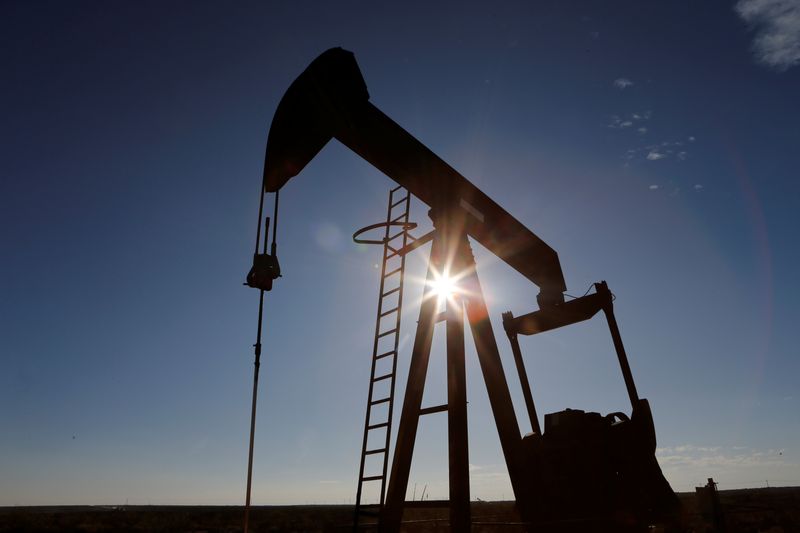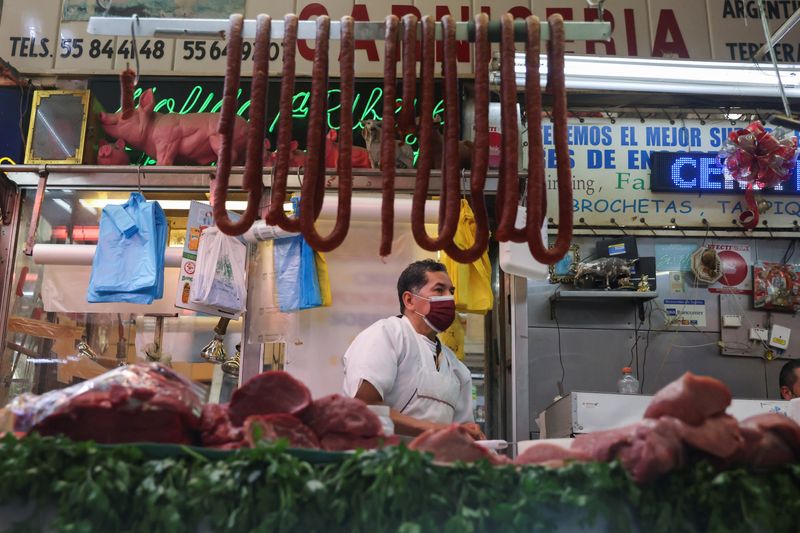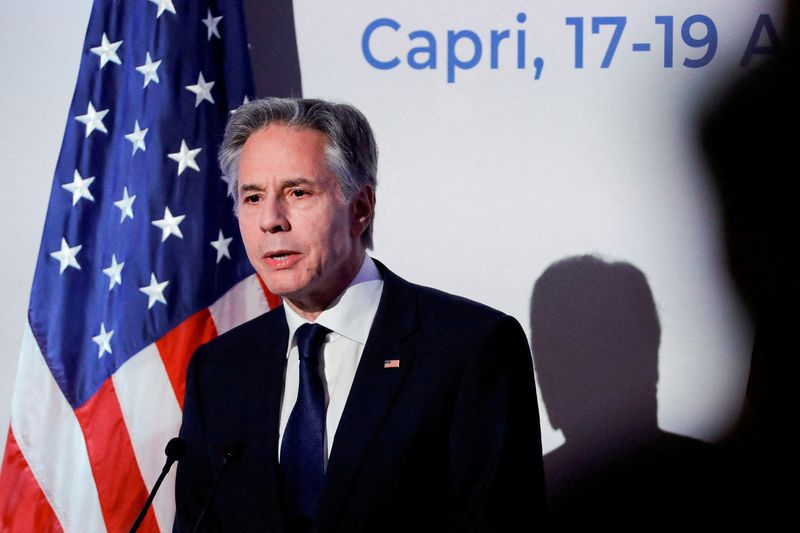US Dollar Indian Rupee
US Dollar Indian Rupee News
VIEW MOREOil rises as dollar slips, focus shifts to economic data
By Shariq KhanNEW YORK (Reuters) -Oil prices rose a dollar a barrel on Tuesday as the fell to its lowest in over a week and…
Mexico annual headline inflation seen higher in early April- Reuters poll
MEXICO CITY (Reuters) – Mexican headline inflation likely ticked up in the first half of April as core inflation eased, a Reuters poll showed on…
Blinken plans to visit Saudi Arabia to take part in World Economic Forum, Axios reports
(Reuters) – U.S. Secretary of State Antony Blinken is planning to visit Saudi Arabia, where he is expected to take part in the World Economic…
Comcast Lights Up WiFi Boost Delivering Gig Speeds to Xfinity Mobile Customers on Millions of WiFi Hotspots
Free Feature Supercharges Xfinity Mobile and Comcast Business Devices with Gig Speed On the Go PHILADELPHIA–(BUSINESS WIRE)–Xfinity Mobile and Comcast Business Mobile devices can now…
Beyond Benign and Dow Expand Collaboration to Advance Green Chemistry Education
MIDLAND, MI / ACCESSWIRE / April 23, 2024 / Dow (NYSE:DOW), a global leader in materials science, and Beyond Benign, a nonprofit organization focused on…
Dollar to Rupee exchange rate
The Indian rupee is one of the key currencies of emerging economies, backed by both strong economic growth and support from the Reserve Bank of India (RBI).
Indian Economy. Current situation and outlook
India’s economy is one of the largest in the world and has shown strong growth since the 1990s, when investment in the country peaked in 1994. India is classified as an agrarian-industrial country, with half of GDP generated by services (most of it IT) and the government actively working to liberalize the market.
The agricultural sector accounts for about 18% of the gross national product, employing 60% of the population. Industry accounts for about 28% of the country’s GDP, and energy consumption remains among the highest in the world. Coal and oil together account for 85% of energy consumption. Oil reserves cover 25% of domestic demand for oil, which is why imports into the country remain high.
In recent years, some weakening of external demand for Indian assets, as well as outbreaks of COVID-19 have been restraining factors in India’s economic development. In addition to the effects of the war in Ukraine, frequent and widespread lockdowns in China, including in key production centers, have slowed down business activity between China and India, which is reflected in new delays in global supply chains.
Stronger, broader and more persistent price pressures have also led to tighter monetary policy in many countries, so the overall risks to the economic outlook have risen sharply.
India is an importer, which has resulted in a negative trade balance over the past 10 years. Note that in the case of a breach of parity, as it was in 2020, when exports exceeded imports, the Indian rupee remains virtually unchanged against the U.S. dollar, due to active intervention of the Reserve Bank of India in the foreign exchange market.
The country’s GDP growth rate is one of the highest in the world due to the high level of business activity in the country. At the same time, given that imports in the country are quite high, India is sensitive to external shocks. The country’s inflationary backdrop is largely similar to that of key emerging market economies (about 5.4% yoy on average over the past 10 years). Inflation is now beginning to rise.
Monetary policy is an important factor influencing the Dollar to INR exchange rate
The main objective of the Reserve Bank of India’s monetary policy is to maintain price stability while maintaining the growth target. Price stability in the country is a prerequisite for sustainable growth. The government of India sets an inflation target for every five years. India’s current inflation targeting system is flexible.
The policy aims to set a policy rate based on assessing the current and changing macroeconomic situation, and to modulate liquidity conditions to anchor money market rates at or near the rate. Monetary policy instruments include changes in bank rates, selective credit controls, changes in reserve requirements, etc. The gradual tightening of monetary policy amid some acceleration of inflation will develop in the coming quarters to keep the financial sector manageable.
Dollar vs Rupee. Features and expectations
Dollar vs Rupee exchange rates are market driven. However, the Reserve Bank of India has been aggressive in the foreign exchange market. As a result, the currency system used for the Rupee vs. the US Dollar is a regulated exchange rate.
Other exchange rates, such as INR/JPY and EUR/INR, are subject to fluctuations typical of floating exchange rates. As a result, it creates arbitrage opportunities. The government prefers not to pursue a strategy of pegging the rupee to a particular foreign currency at a particular exchange rate. The Central Bank’s intervention in the foreign exchange markets is primarily aimed at making sure that the US Dollar to Rupee exchange rate has low volatility for domestic settlement.
While the rupee appears weaker than a basket of emerging market currencies, as well as weaker disproportionately to the dollar, there are clearly fewer sharp spikes. It is all about the active actions of the local Central Bank, which steadily raises and lowers its key rates.
Correlation of USD to INR exchange rate, influencing factors
The main divergence with EM currencies took place at the end of 2020, when currencies of exporting countries began to strengthen against a surge in global demand due to the mass lifting of lock-ups. The rupee, on the contrary, remained static at that moment; which is also confirmed by the decrease in its volatility. The reason for that was the divergence in monetary policy, as well as the temporary periods of COVID-19 outbreaks.
Currently, the rupee volatility is lower than the DXY, but higher than the EM currency basket, due to the multiplier effect of the climate difficulties in the country. Nevertheless, we believe volatility will continue to increase as the country’s inflation rate increases through the first half of 2022.
India’s inflation is currently moving with some lag, unlike in the United States, so the spread between the two is negative, and the rupee is less responsive to the statistics. A 1% change in inflation changes the USDINR exchange rate by 2%.
At the same time, the rate spread between India and the US is also declining, suggesting a divergence in QE between the countries and thus making the rupee weaker against the dollar. In the coming quarter, we expect the momentum in rates to remain intact, with the inflation spread expected to turn positive in the near term on the back of a tight monetary policy in the US and, conversely, a supportive real sector in India. This leads to a continuation of the trend in the USD to INR pair live.The strengthening space of 1 Dollar in Rupees today persists — the USD INR live pair will begin to correct in the second quarter of 2023 after a slowdown in inflation. The forecast is much more positive than in the case of Dollar to peso rate. We consider the scenario of the pair going above the indicated range unlikely and only in case of a global recession.










